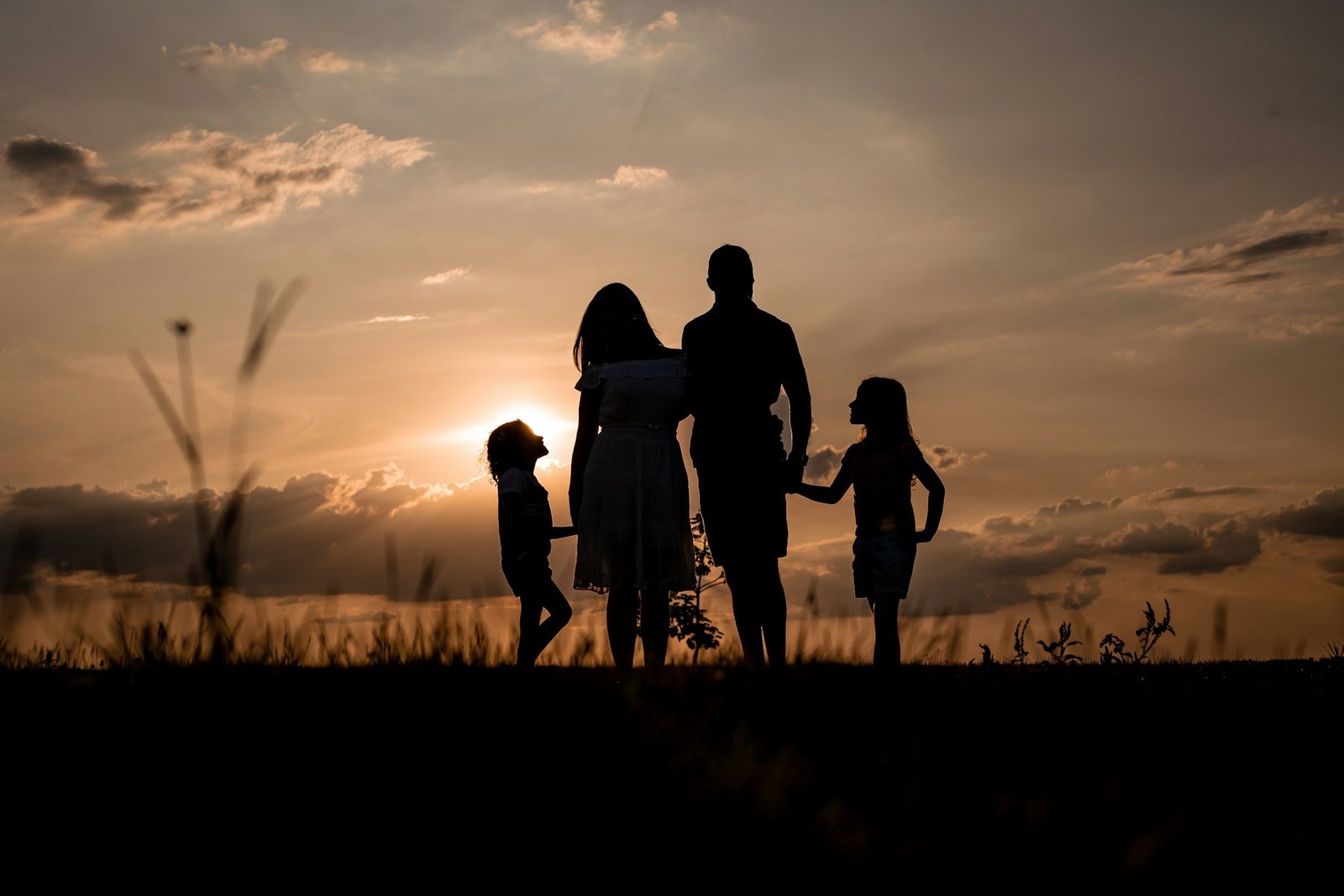Immigration has long shaped the religious landscape of the United States, continually introducing “new pilgrims” who help transform the nation’s faith, economic, and cultural identity. Often driven by deep religious convictions, these immigrants represent a modern wave of pilgrims, journeying not only in search of better opportunities but also as an act of faith. Dr. Joseph Castleberry, president of Northwest University, explores this idea in his insightful book The New Pilgrims, where he argues that immigrants are renewing America’s faith and values. Drawing on numerous interviews and research, Castleberry writes, “Just like American Christians may appropriately see their lives as a pilgrimage to Heaven, in which they carry out a calling to spread the gospel to everyone as they go, immigrant Christians interpret their journey to the United States as part of that holy pilgrimage—one in which God has shown mighty deliverance and power to save.”1
A Family Pilgrimage
This was the story of my family when we immigrated to this country in September 2001 from Ukraine. Following the fall of the Soviet Union, America graciously opened its doors to thousands of Christian families granted refugee status on religious grounds. Under the oppressive communist regime, millions of Christians were persecuted, imprisoned, or killed, and my family was no exception. My great-grandfather Andrey was arrested during Stalin’s Great Purge of the 1930s for his unwavering faith in Christ. He was sent to the gulags, where he endured several years of brutal imprisonment before being executed in 1938, lined up and shot alongside countless other prisoners for his faith. His story became a painful yet powerful legacy, a reminder of the cost of discipleship under tyranny.
The persecution did not end with him. My grandparents and parents also lived under the shadow of religious repression, facing limitations, discrimination, and constant surveillance that deeply affected their lives. Their faith, however, was not extinguished, it was refined. So, when we arrived in the United States, we saw our journey as more than a migration, it was a pilgrimage of faith and hope. Just as the Pilgrims sought a land where they could worship freely and live out their beliefs, we too believed that God had guided our steps to America, a nation promising religious freedom and new opportunities to serve Him. This is the story of countless refugees and immigrants, who carry not only the scars of past persecution and hardship, but also the faith and resilience to enrich America’s spiritual and cultural mosaic.
A Pilgrimage That Shapes a Nation
Simply by their presence, Christian immigrants make a profound impact on the Christian demographics in the United States. In 1990, about 90% of U.S. adults identified as Christians; by 2024, that number had dropped to 62%.2 In contrast, approximately 70% of immigrants arriving in the United States identify as Christian, helping to counterbalance the decline in affiliation among native-born Americans.3
While Catholicism remains the largest single Christian tradition among immigrants, representing about 41% of new arrivals compared to 26% of the overall U.S. adult population, the denominational landscape is remarkably diverse. Roughly one-quarter identify as Protestant, with vibrant Evangelical, Pentacostal, Baptist, Seventh Day Adventist, and Anglican communities among them. Orthodox Christians, drawn largely from Eastern Europe, the Middle East, and Africa, make up nearly 9% of Christian immigrants, a striking contrast to their small share (0.3%) in the general U.S. population. Together, this mix reflects global Christian demographics far more than traditional U.S. patterns, bringing unique expressions of worship, theology, and mission into the American church. 4
Paul E. Pierson, a senior professor of the history of mission and Latin American studies, highlights the influence of Christian immigrants in his book The Dynamics of Christian Mission. He writes, “Western cities are increasingly multi-ethnic. Almost every large Western city has over one hundred different language-ethnic groups in its population. Some of the newer groups have many Christians among them, and immediately start churches… For example, it was recently reported that in Boston, while many of the older traditional churches have been dying, there are many new congregations among immigrant groups. The same is true in New York City.”5
Ethnic diaspora churches enrich the American Christian mosaic through what Gemma Tulud Cruz calls “courageous hope,” “creative resistance,” “steadfast faith,” and a “festive community spirit.”6 They actively demonstrate God’s transforming work by cultivating vibrant worship, resilient community life, and a sacrificial faith shaped by His presence throughout their journey. Through the songs and rituals of their cultures, they foster unity and strengthen community bonds, and around tables filled with both “home” foods and shared hospitality, they preserve cultural identity while welcoming others, deepening the diversity and vitality of the church in America.
Christian immigrants aspire to renew America’s faith and values, envisioning the nation as “a shining city on a hill for the world so that the world may see the glory of God.”7 Looking ahead, the influence of Christian immigrants is expected to grow significantly. Projections from the Center for Immigration Studies suggest that by 2065, nearly 20% of the U.S. population will be immigrants, with a significant portion identifying as Christian.8
However, the reality is more complex than it may initially appear. Ethnic diaspora churches face significant challenges that could hinder their ability to impact American society with the gospel. Many of these challenges arise from within their own communities, creating critical gaps that must be bridged for ethnic churches to fulfill their mission as the “new pilgrims.” My next post will explore these gaps, both external and internal, in greater detail.
Thank you for reading Part 1 of the series Cultural Crossroads: From Challenges to Impact – Ethnic Diaspora Churches in the American Mosaic, an ongoing journey into how immigrant churches navigate cultural gaps, preserve their heritage, and engage their communities to make a lasting gospel impact in the United States.
1 Joseph Castleberry, The New Pilgrims: How Immigrants Are Renewing America’s Faith and Values (Franklin: Worthy Publishing, 2015), 54.
2 Pew Research Center, U.S. “Decline of Christianity in the U.S. Has Slowed, May Have Leveled Off” Pewresearch.org. August 8, 2025. https://www.pewresearch.org/religion/2025/02/26/decline-of-christianity-in-the-us-has-slowed-may-have-leveled-off/?utm_source=join1440&utm_medium=email&utm_placement=newsletter&user_id=674c789bce8faf6236097f62
3 70% estimate includes both legal and undocumented immigrants: Pew Research Center, U.S. “Religious Landscape Study.” Pewresearch.org. Dec. 26, 2024. https://www.pewresearch.org/religious-landscape-study/database/immigrant-status/immigrants/?utm_source=chatgpt.com and “Most Immigrants at Risk of Deportation From U.S. Are Christian, Report Finds,” Usnews.com May 31, 2025. https://www.usnews.com/news/best-states/massachusetts/articles/2025-04-01/most-immigrants-at-risk-of-deportation-from-us-are-christian-report-finds.
4 While this source is somewhat outdated, the most recent data indicates a nearly identical breakdown. Douglas S. Massey and Monica Espinoza Higgins, “The Effect of Immigration on Religious Belief and Practice: A Theologizing or Alienating Experience?” Social Science Research 40, no. 5, 1371–1389, https://doi.org/10.1016/j.ssresearch.2010.04.012.
5 Paul Pierson, The Dynamics of Christian Mission: History Through a Missiological Perspective (Pasadena: WCIU Press, 2009), 332.
6 Gemma Tulud Cruz, Toward a Theology of Migration: Social Justice and Religious Experience (New York: Palgrave Macmillan, 2014), 127–40.
7 Joseph Castleberry, The New Pilgrims: How Immigrants Are Renewing America’s Faith and Values (Franklin: Worthy Publishing, 2015), 33.
8 Steven Camarota and Karen Zeigler, “Projecting the Impact of Immigration on the U.S. Population.” CIS.org. Dec. 27, 2024. https://cis.org/Report/Projecting-Impact-Immigration-US-Population?utm_source=chatgpt.com



